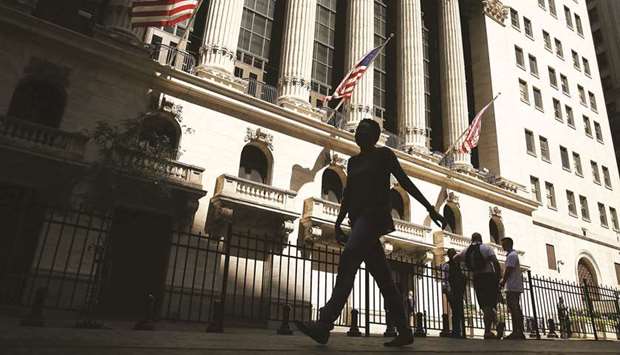Global markets may be too complacent in the face of major upcoming events, with mispricing evident in the options market and a risk that stocks could tumble if investors don’t like what they hear from the Federal Reserve, according to JPMorgan Chase & Co.
First, there’s the Federal Open Market Committee meeting this week, with potential discussion of a rate cut in the face of trade-war uncertainty, or even an actual cut - or neither, given that a large part of the US economic data picture remains solid.
Then there’s the Group of 20 meeting in Japan on June 28-29 and the prospect of US-China trade talks around it. Not to mention economic data like the monthly US payrolls report.
With so many significant wild cards ahead, one might assume that such risks would be priced in across asset classes. But JPMorgan strategists led by Nikolaos Panigirtzoglou wrote in a note on Friday that embedded volatility risk premium is “significantly” below its historical average, citing a measure of implied to realized volatility using 12 gauges across five asset classes.
Also, speculative positions in VIX futures continue to show a large amount of shorts, and the put-to-call open-interest ratio for S&P 500 options shows a low amount of hedging, they said.
“Option markets do not embed enough cushion against the significant event risk markets are facing over the coming weeks,” the strategists wrote.
After a strong start to 2019 fuelled by the Federal Reserve’s dovish pivot and relatively solid economic outlooks, markets have been roiled in recent weeks as US President Donald Trump became more assertive on the trade and tariff front with the likes of China and even Mexico.
In addition, data have started to show the impact of the trade war, with China’s industrial output growing at the weakest level since 2002 and US CEO confidence at the lowest level since the president took office.
Hundreds of companies have asked Trump not to impose additional tariffs. JPMorgan said that an FOMC rate cut next week “would surprise markets while signalling an openness to a July cut,” and “show that the Fed is moving ahead rather than staying behind the curve.” The G-20 meeting at the end of June provides another reason to be pre-emptive, they said, as there’s a good chance of a negative outcome on trade talks, and that would make it even harder to surprise markets with a cut.
There also isn’t much fear of a US recession priced into equity markets, which shows a large disconnect with rates on that front, according to the report. The S&P 500 closed on Friday just 2% below its record high from April.
“The resilience of the equity market is in our opinion showing that equity investors have been leaning towards the thesis of a preemptive Fed,” the strategists said.
“A more cautious and patient Fed next week could cast doubt on the above thesis, creating the risk of an equity market correction.”

People walk by the New York Stock Exchange (file). Global markets may be too complacent in the face of major upcoming events, with mispricing evident in the options market and a risk that stocks could tumble if investors don’t like what they hear from the Federal Reserve, according to JPMorgan Chase & Co.


